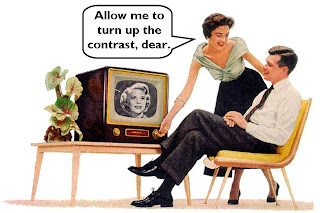
THE STORY
During one of the long garbage worker strikes in
Every day during the garbage strike, he would put his trash into a box. Then he would wrap the box up in wrapping paper—just like a birthday present, complete with a bow. He would put the box in plain sight on the front seat of his car, and leave it there after driving to work. In addition, he left his car door unlocked.
When the work day was over, he would go back to his car, and sure enough, every day that box was gone—it had been stolen. As a result, the man was able to get rid of his undesirable garbage every day—for free.
THE ANALOGY
During this current economic crisis, people have cut back on their spending. What we sell has become less desired. Sometimes it feels as if we are trying to get them to buy undesirable garbage.
In the story, the man got rid of his undesirable garbage by hiding it inside something which appeared more desirable—a gift. In other words, instead of trying to get people to take something they didn't want (trash), he offered something people desired (a gift) and threw in the trash for free.
This same principle can work in business. Rather than trying to sell what people do not want, sell them what they do want (even if it is just an illusion) and throw your product in for free.
THE PRINCIPLE
The principle here is that there is a difference between "stuff" and "status." Stuff is what you make—goods and services. Status is what people desire—an enhanced sense of self-worth. People want to buy status and you want to sell stuff. Therefore, success comes when you can hide your undesirable stuff inside a pretty box of status.
To a large extent, it really doesn't matter what stuff is inside the box. So long as it is packaged inside a status box, people will want it. If the box is pretty enough, they will even take your garbage.
Take transportation, for example. It used to be that status came from owning the newest, biggest, most powerful, most gadget-laden SUV on the block. People abandoned cars and bought SUVs in droves, even though none of them ever planned to take these cars off-road. They really didn't want the SUVs, per se. They wanted the status which came with the SUV.
Now, the SUVs are positioned as wasteful, earth-hating, gas guzzling, obnoxious vehicles. Their status is gone. The new status symbol is the earth-friendly, responsible, fuel-efficient Hybrid car. So people are buying the Prius in droves. Again, a lot of people buying the Prius really don't want a Hybrid. They want the status which comes with owning the Prius.
So the idea here is stop focusing on how to sell your stuff and instead create a strategy which places your stuff inside a desirable box of status. Think of it this way: What if you had to put the price tag on the box and treated the contents as if they were free?
I worked on a project like this for an upscale consumer electronics retailer. This retailer saw itself as in the business of selling stuff—items like televisions, speakers, and amplifiers. We told them they would be better off seeing themselves as selling a status laden in-home entertainment experience. The idea was to reposition them as experts in designing the home entertainment room that would make customers the envy of the neighborhood.
Sure, they would still be putting televisions, speakers and amplifiers into your home. But for all intents and purposes, that "stuff" was being given to the customer for free. What the customer was really paying for was the status of having home entertainment experts designing the perfect home entertainment option for them.
In today's economic environment, the accumulation of more stuff appears to be out of favor. Frugality is the new chic lifestyle. Trying to get people to open up those wallets and pocketbooks just to get more stuff will be a tough sell. The better idea is to sell the box of the new "Frugal Chic" and give them the stuff inside for free.
Therefore, position your brand as something that imbues those other things being valued—the current attributes of status, such as "earth-friendly" or a wise use of resources. Then sell those attributes rather than trying to sell the stuff. Treat the stuff as being thrown in for free.
For example, look at Apple. Their successful commercials in the
Almost anything can be put into the box, provided the box is desirable (even garbage). Link your stuff to the best box, and the customers will pick your box. Remember, your competition is not other firms selling the same kind of stuff. Your competition is anyone putting stuff into the same kind of box.
Your competition could be a computer, a car, a vacation, food, clothing, or whatever. All can be positioned as being the most "frugal chic." The money will flow to the one who wins the "battle of the box"—the one most linked to the current status, regardless of the contents.
SUMMARY
The problem today is trying to sell stuff in a post-stuff environment, a time when conspicuous consumption is out and frugality is in. The solution is to quit selling the stuff and focus on the current definition of status. Sell the status and throw in the stuff for free.
FINAL THOUGHTS
At Christmas time, it is not unusual for parents to buy their child an expensive toy, only to find the child more interested in playing with the box than the toy that was inside the box. We adults can be the same. We can be more interested in the status box than the stuff inside the box. Pay attention to your packaging.






